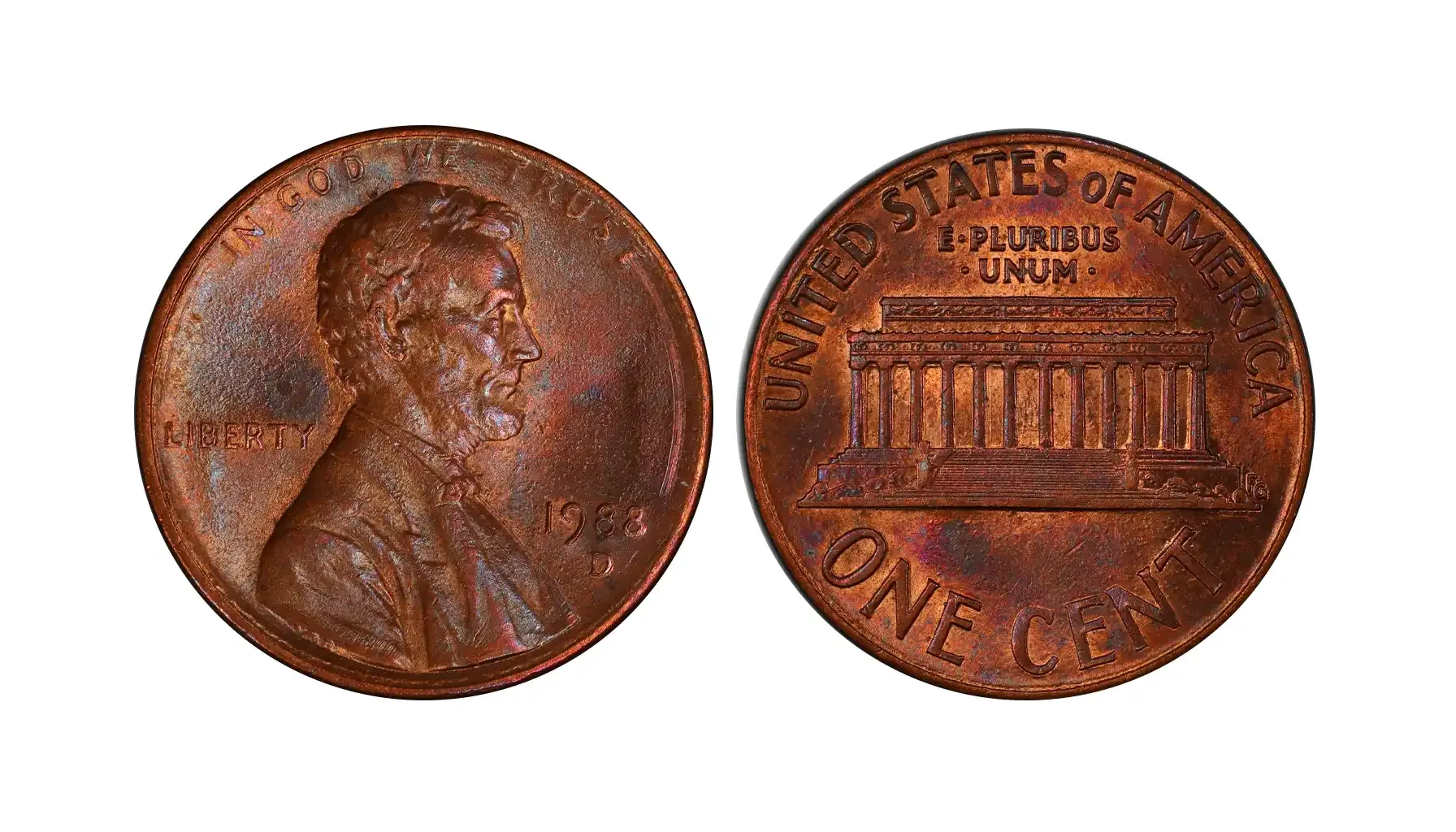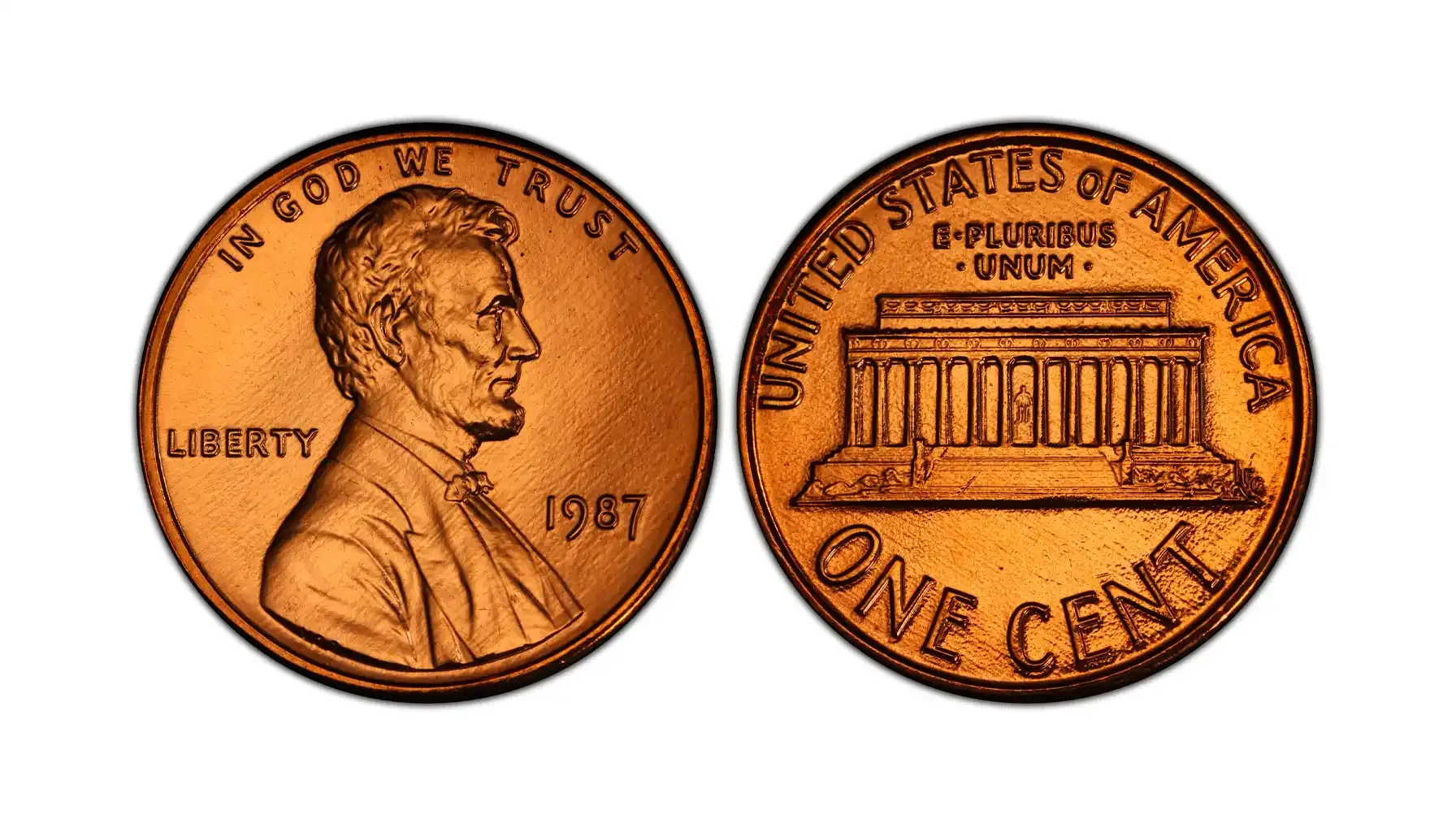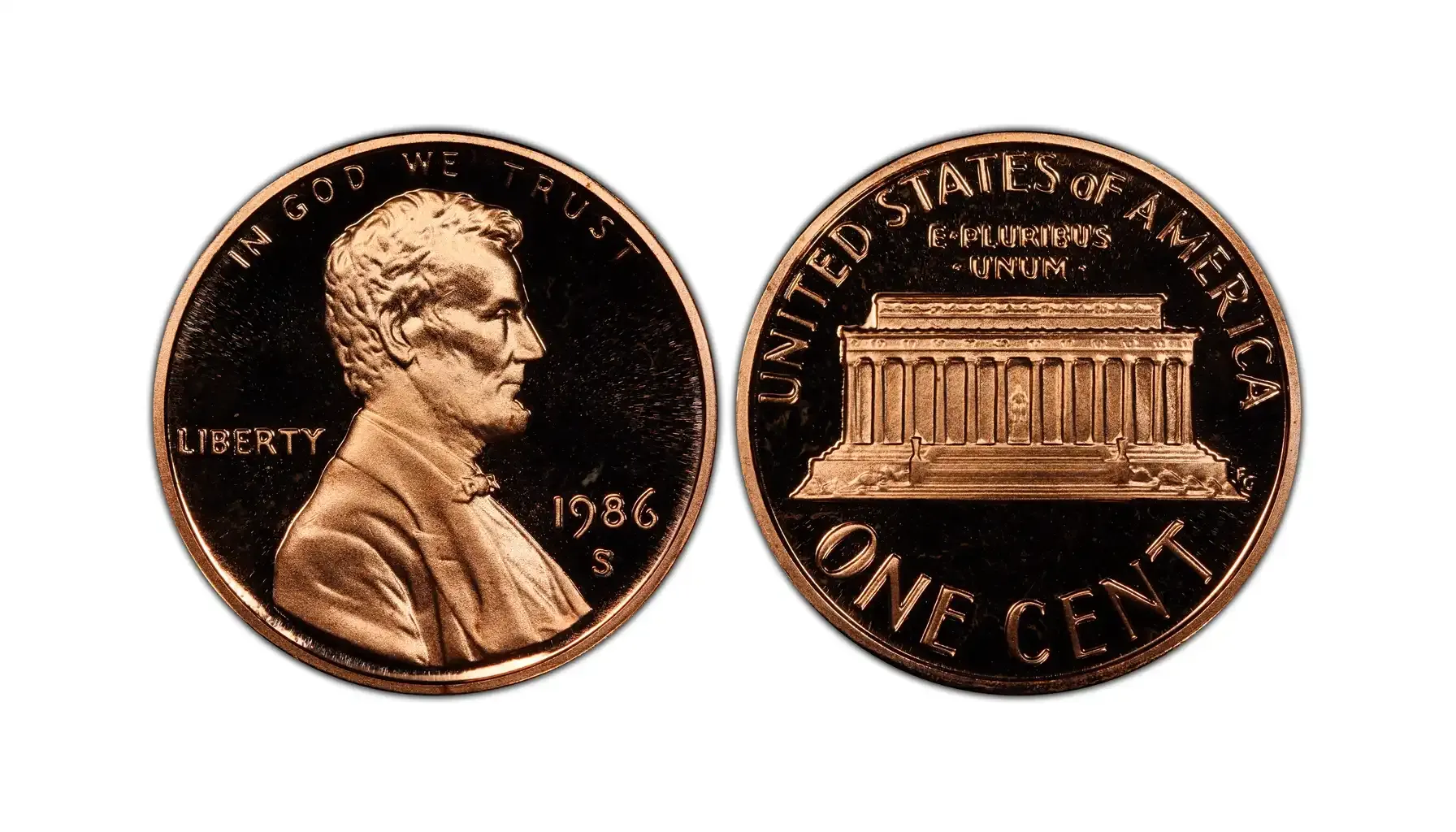Contents:
1990 was the year when the Hubble Space Telescope was launched, and Germany was reunified. It’s also the year when the 1990 penny was minted, a member of the ongoing Lincoln series.
How much is a 1990 penny worth? Learn about the price of this piece, its varieties, and errors.
There's an app that can identify the coins for you. Quick and convenient.
Lincoln Penny Overview
Lincoln penny is a very old series, and it replaced the Indian Head series. The 1907 Indian head penny, 1908, and 1909 were the last from the Indian series. Lincoln coins came in with an updated, more sophisticated design.
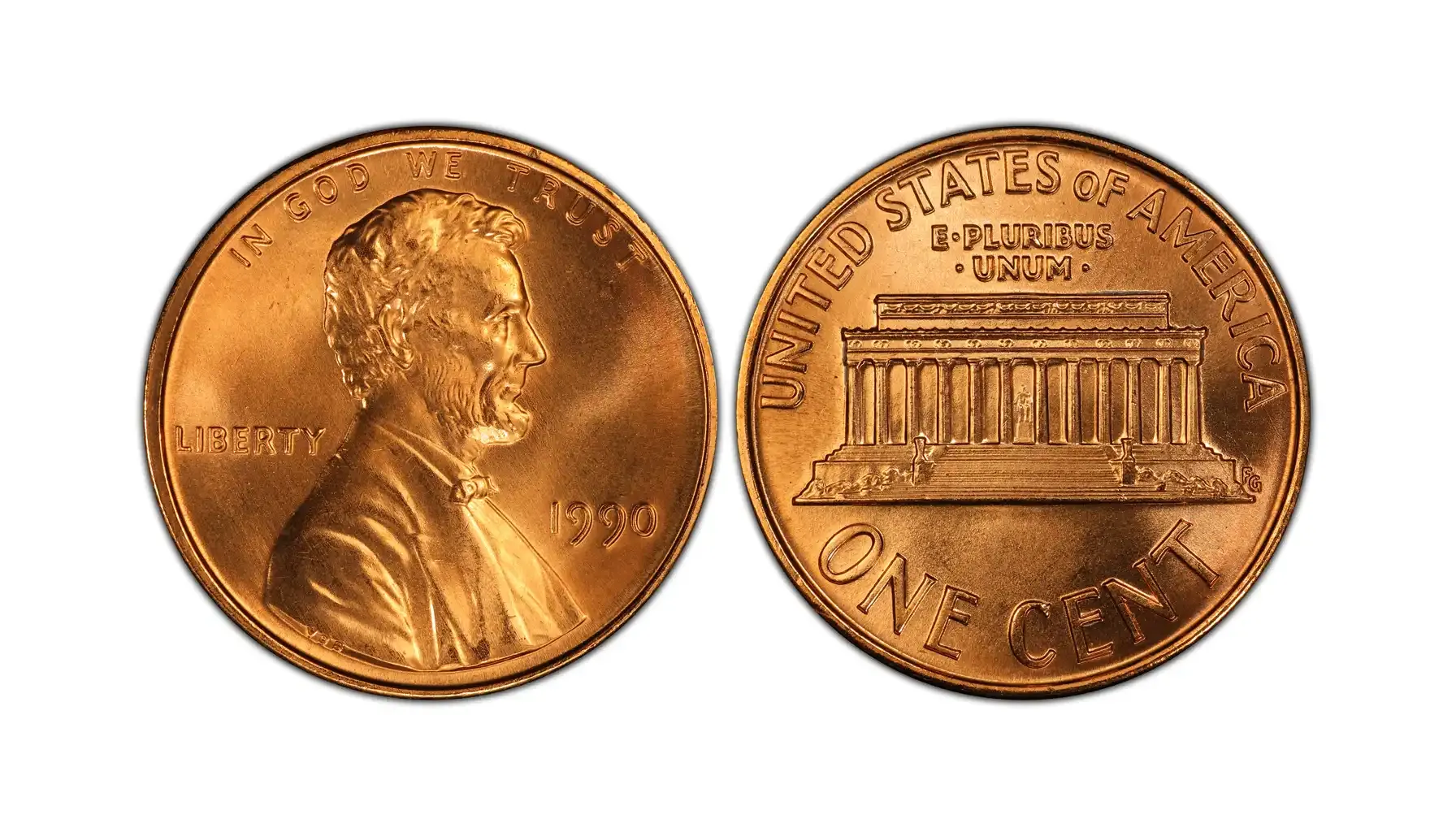
Obverse: Portrait of Abraham Lincoln’s bust, facing right. You should find the inscriptions “IN GOD WE TRUST”, “LIBERTY”, and the year 1990. Victor David Brenner designed the obverse in 1909, which was carried to the 1990 version.
Reverse: Lincoln Memorial building. You should find the inscriptions.
“UNITED STATES OF AMERICA”, “E PLURIBUS UNUM”, and the denomination “ONE CENT”. The reverse was designed by Frank Gasparro.
The main characteristics of the 1990 Lincoln cent | |
Country | United States |
Years of Minting | 1959-2008 (Memorial reverse) |
Type: | Standard circulation |
Shape: | Round |
Composition and metal content | Bronze (95% Copper, 5% Zinc) |
Diameter | 19 mm |
Weight | 3.11 grams |
The Mints | United States Mint of Denver, United States Mint of Philadelphia, United States Mint of San Francisco |
Lincoln Penny 1990 Varieties
Collectors are mainly interested in these three 1990 cent varieties:
1990 (No Mint Mark): Philadelphia Mint.
1990-D: Denver Mint.
1990-S: San Francisco Mint .
Each Mint Facility offered something different for the penny. For example, San Francisco mainly did proof coins (pieces intended for collecting).
1990 Penny No Mint Mark Value
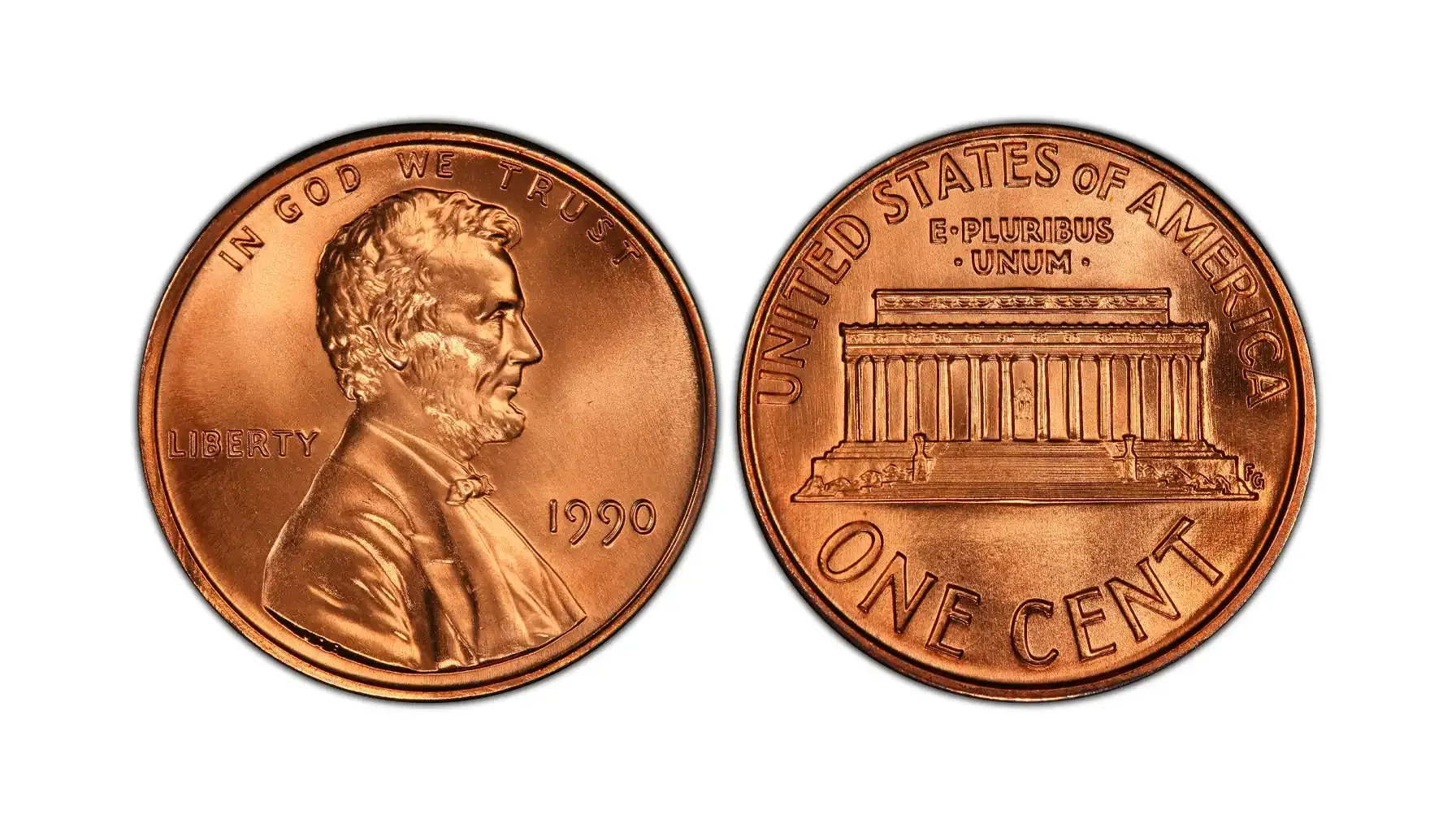
How to identify: The obverse shows a blank space under the date.
Mintage: 6,851,765,000.
Estimated Value: 10¢ – $6+.
1990 penny value no mint mark is generally low for the low grades, but for high grades 1990 no mint mark penny value is respectable. After all, its face value, as a copper penny, is only 0.01 of a dollar.
1990 D Penny Value
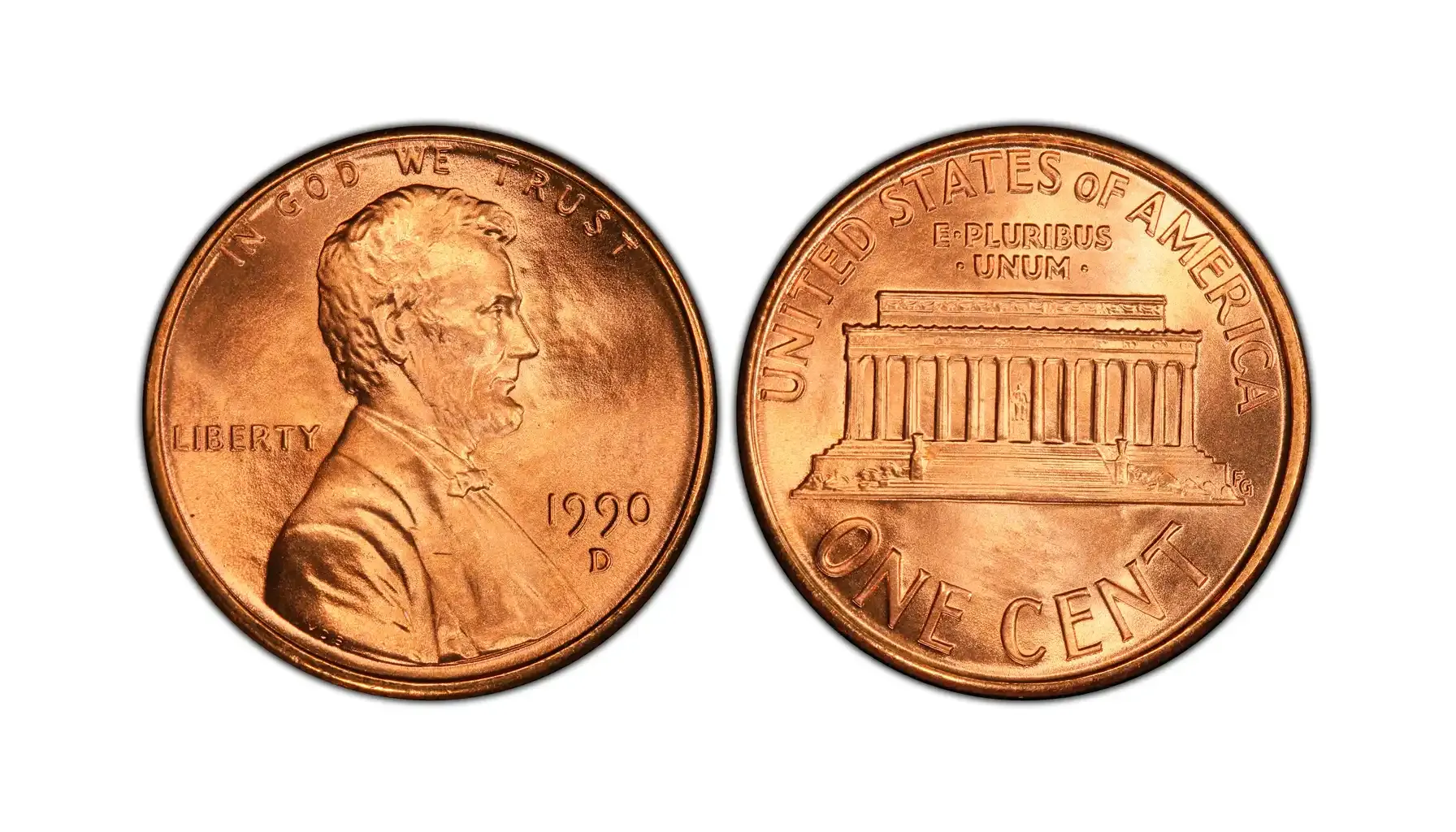
How to identify: On the obverse, there’s a D mark under the date.
Mintage: 4,922,894,533.
Estimated Value: 10¢ – $7+.
The Denver mint came in second according to its mintage, though value largely stayed the same as the Philadelphia variety.
1990 S Penny Value
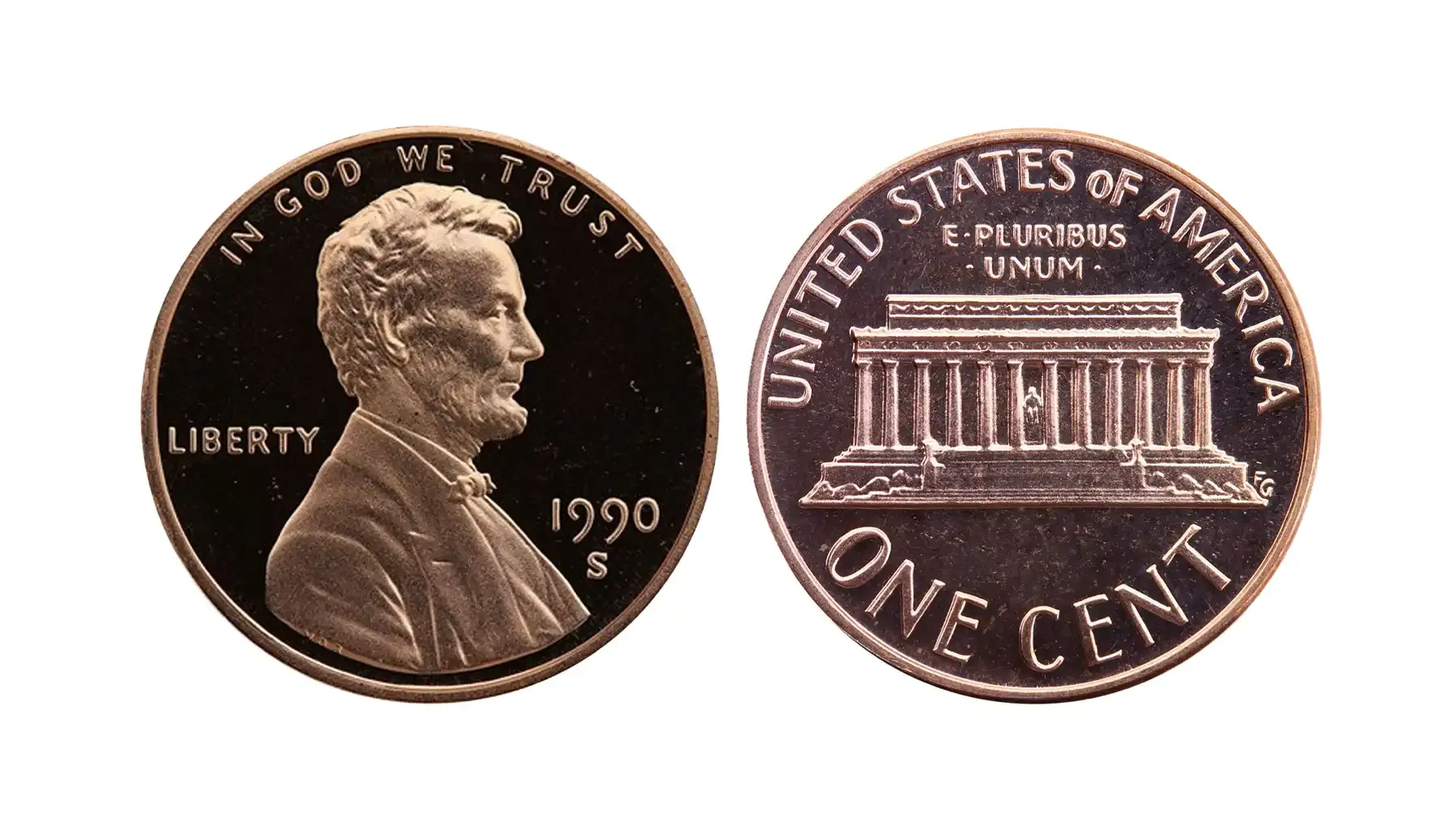
How to identify: On the obverse, there's an S mark under the date.
Mintage: 3,299,559.
Estimated Value: $1 – $3+.
S-pennies immediately show a higher value than Denver or Philadelphia releases. All pieces were made with great care because they were intended for collecting, not given for circulation.
Misconception: 1990 Silver Penny
Some people claim they have a 1990 silver penny. Unfortunately, such a coin does not exist. Some 1990 pennies may look silver-colored, because:
Post-1982 cents are mostly zinc, coated with copper. If the copper layer wears off or was never applied correctly, it may appear silver or gray.
Some Lincoln cents were purposefully coated in chrome or were silver-plated, giving them a silver look (but not the material).
Be careful when someone tries to sell you a counterfeit. Learning how to spot fake coins would benefit any collector.
Penny Grading
Grading helps determine a coin’s condition and value. The scale ranges from Poor (P-1) to Mint State (MS-70) or Proof (PR-70) for specially struck coins.
Grade | Condition | Description |
P-1 to G-4 | Poor to Good | Heavily worn, and the design is nearly gone. |
VG-8 to F-12 | Very Good to Fine | Only the outline is visible, and lots of wear. |
VF-20 to EF-40 | Very Fine to Extremely Fine | Moderate wear, some details are visible. |
AU-50 to AU-58 | About Uncirculated | Slight wear on the highest points, but details are generally preserved. |
MS-60 to MS-70 | Mint State (Uncirculated) | No wear at all, numbers are struck even more clearly. |
PR-60 to PR-70 | Proof (for “S” mint mark coins) | Specially made for collectors, has a mirror finish and extra sharp details |
1990 Penny Error List with Pictures
If you ever look at the rare Lincoln penny list, you’ll notice that most of the examples there have some kind of error. Let’s look at some of those valuable errors and how to identify them.
1990 Broadstrike
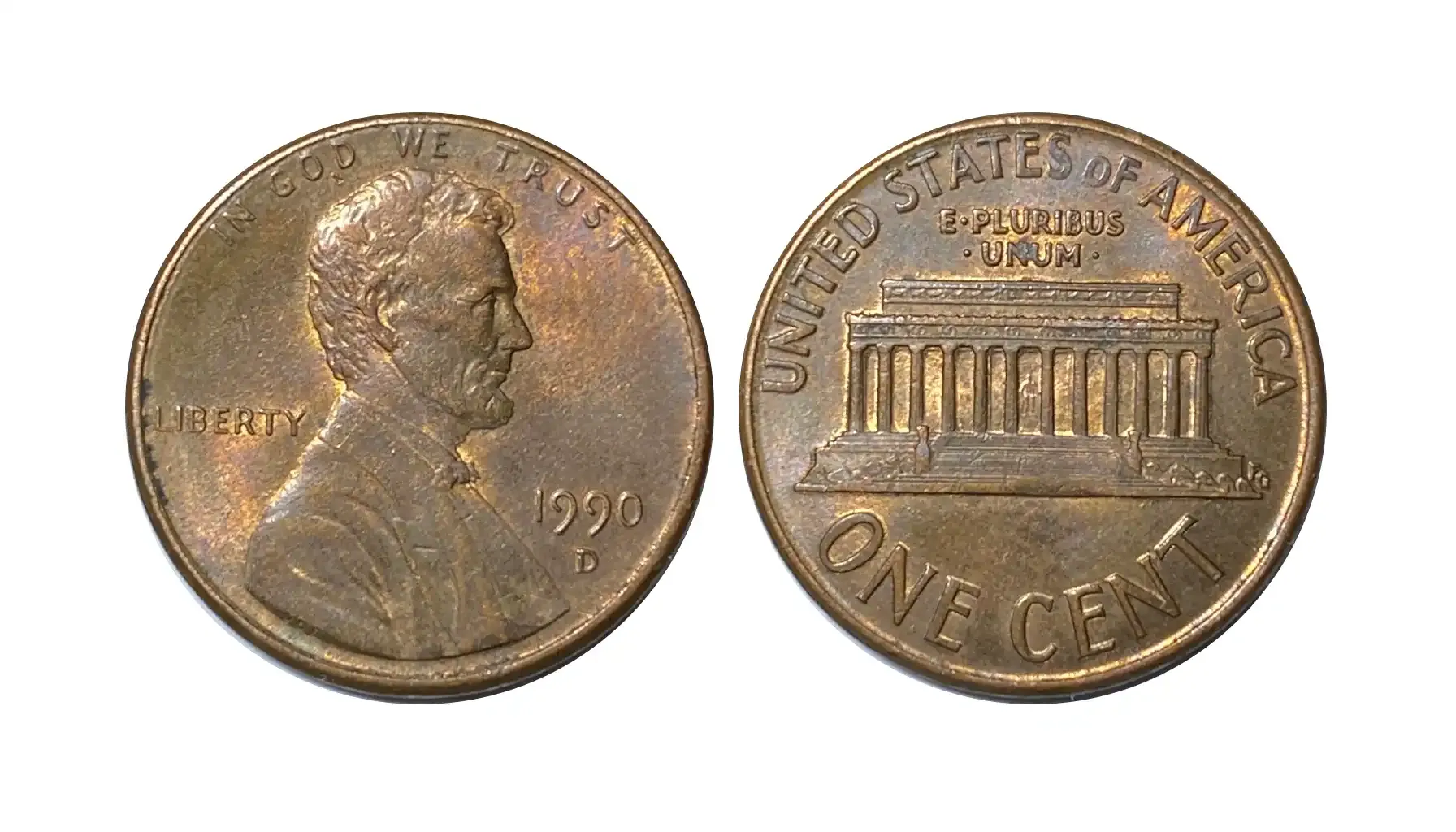
How to identify: The coin appears wider and flatter than normal and has no raised rim (edge).
Estimated value: $15 – $50+.
Error cause: A coin is struck without the retaining collar that normally keeps it within a fixed size and shape.
1990 Repunched Mint Mark (RPM)
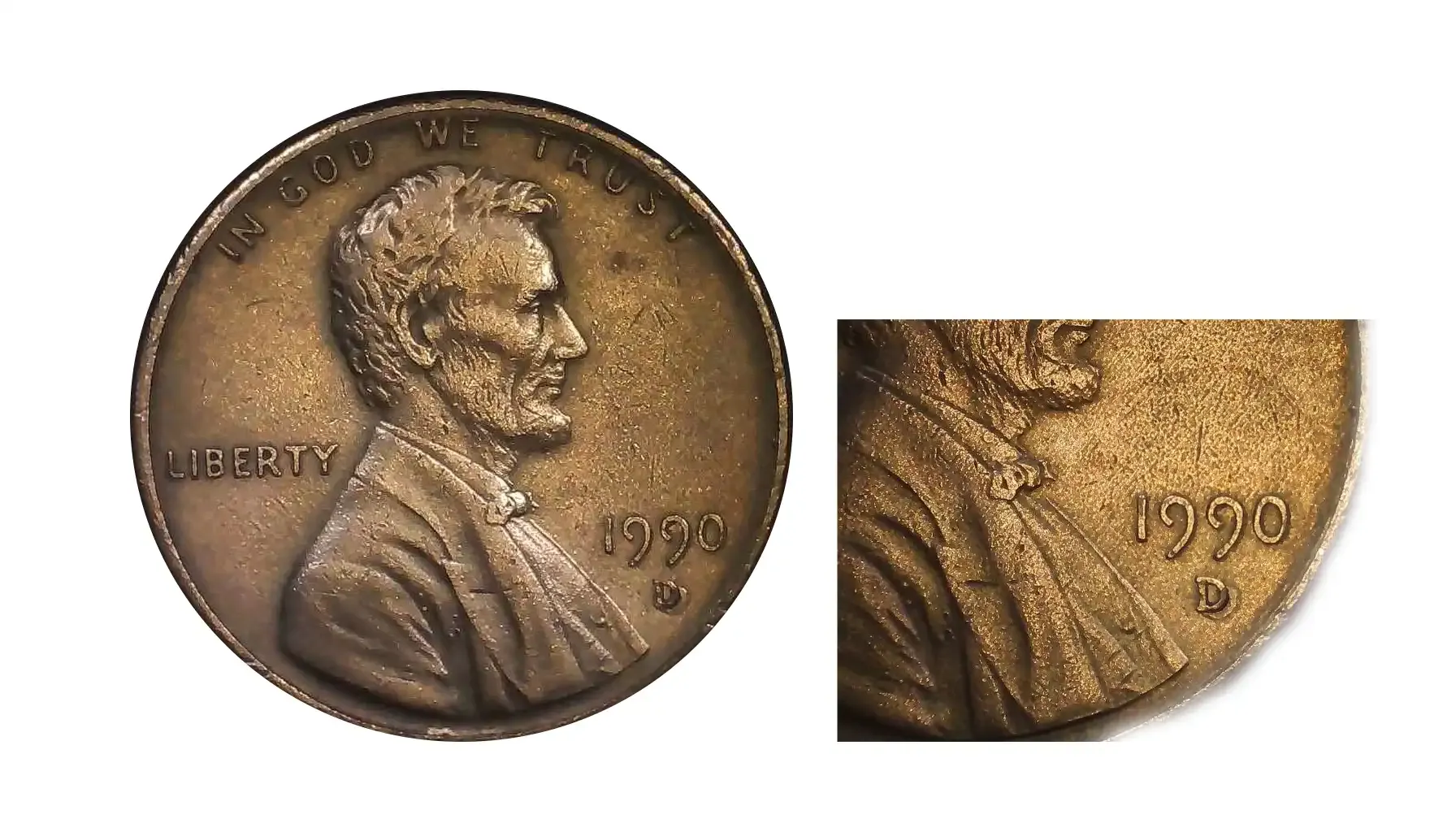
How to identify: Doubling, usually below, to the side, or above the main mint mark.
Estimated value: $30 – $60+.
Error cause: The mint mark is punched into the die more than once, but in slightly different positions.
Before 1990, Mint marks were punched by hand into working dies, which led to errors like RPMs (Repunched Mint Marks). 1961 Lincoln Penny had a fair share of RPMs, for example.
Starting in 1990, mint marks were engraved directly into the master die, making RPMs nearly impossible after this year. It means that this error is as desirable as ever.
1990 No S Proof Penny
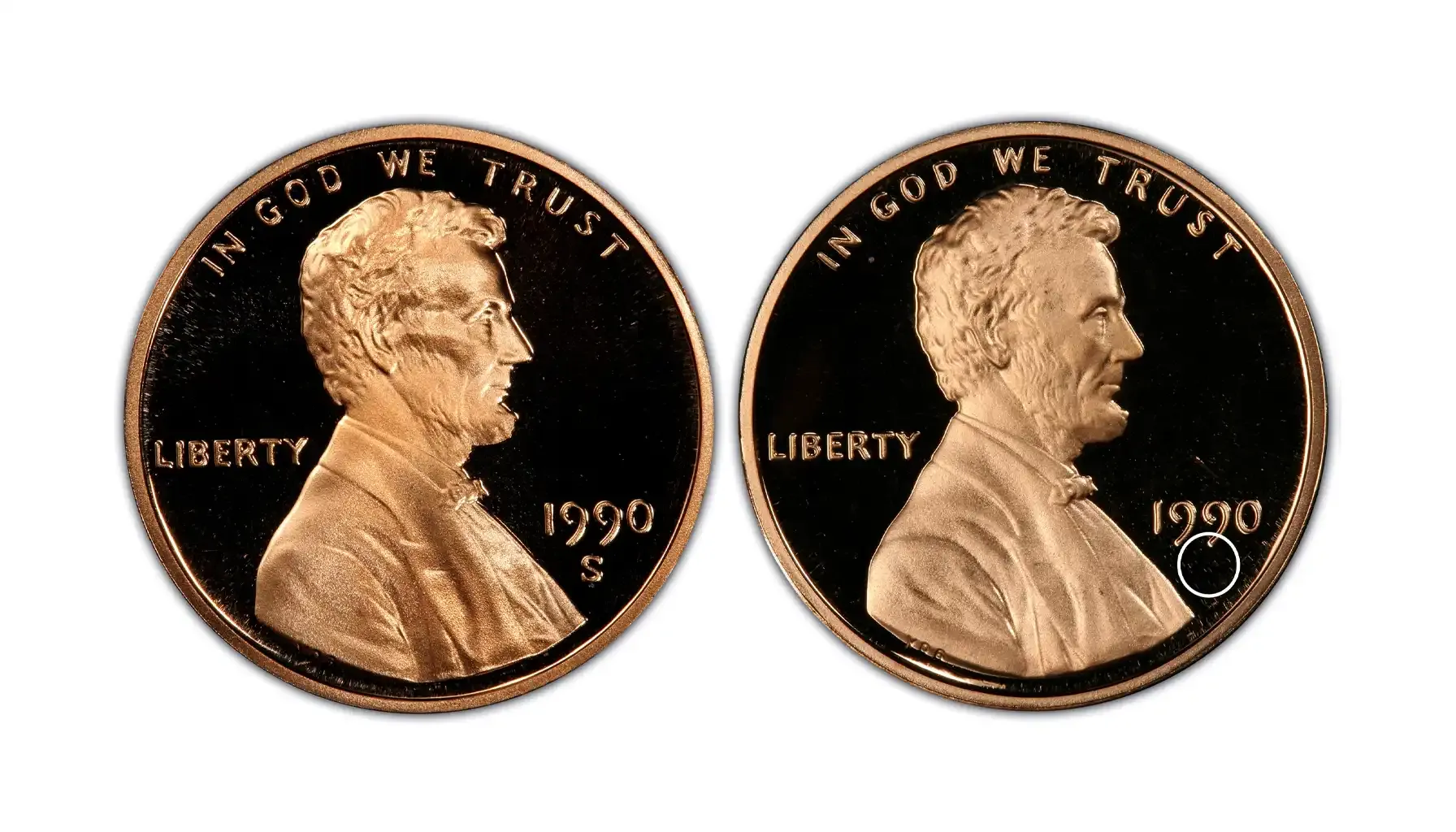
How to identify 1990 no S penny: The area under the date should be blank (no “S”). Unlike the no-mint-mark Philadelphia version, the no-S has reflective surfaces and contrast.
Estimated value: $20,000 – $25,000+.
Error cause: A die was mistakenly prepared without the “S” mint mark, meaning it was left off during die creation
An extremely valuable 1990 penny error. Fewer than 200 examples are known. A proof Lincoln cent minted in San Francisco that was missing the “S” mint mark, even though all proof coins from that mint should have had it.
Misconception: 1990 Wide AM Penny
Wide AM is a popular error among collectors. It describes the spacing between the letters “A” and “M” in the word “AMERICA” on the reverse (back).
The U.S. Mint used proof dies (meant for special collector coins) on regular circulation coins by mistake in some years. This mix-up caused the “Wide AM” reverse to appear on business-strike coins in certain years (like 1998, 1999, and 2000).
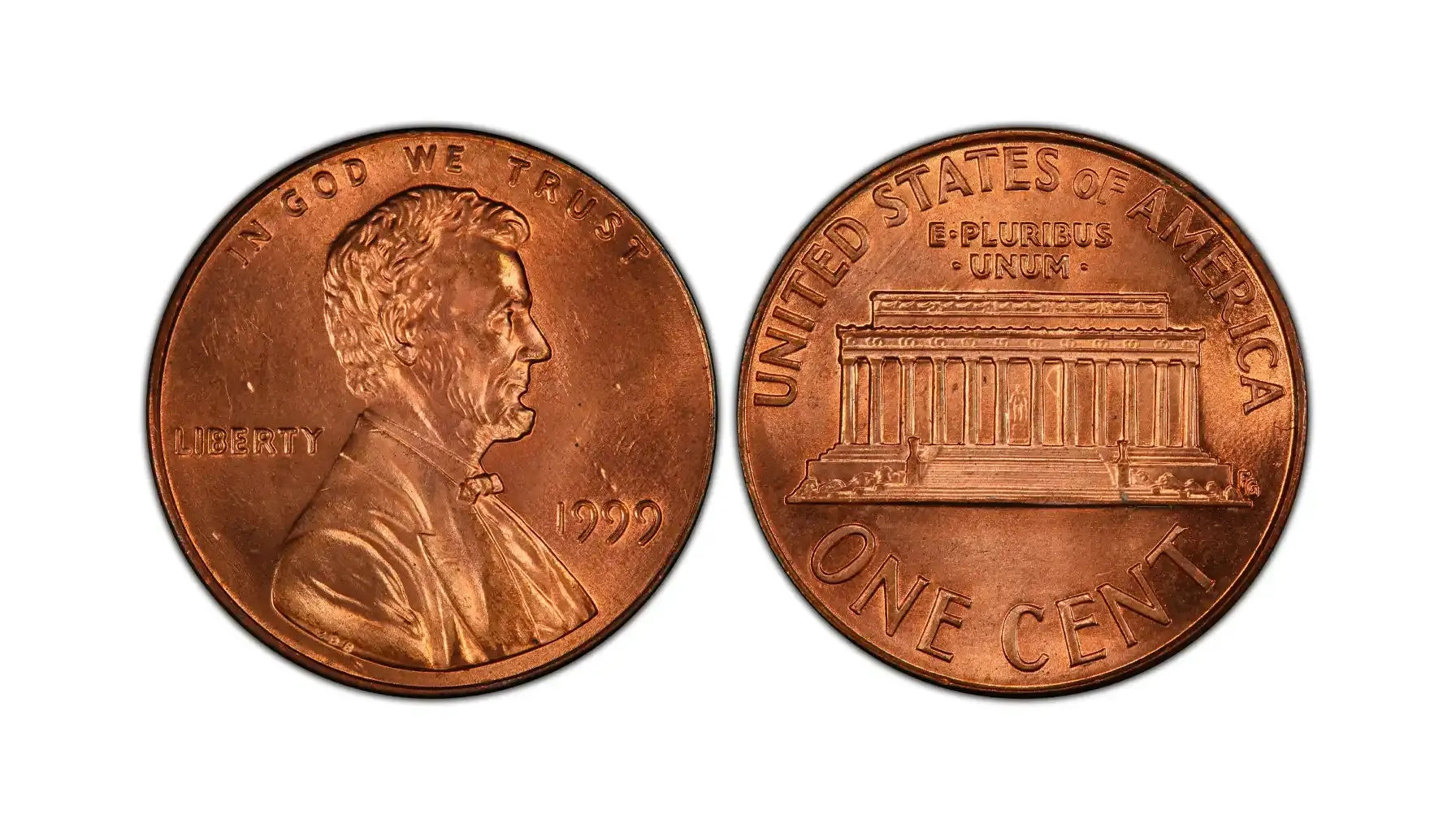
Unfortunately, there’s no such thing as a 1990 penny wide AM value. The 1990 release didn't have this mix-up. Be careful when people are trying to sell you a Wide AM 1990. Either they found something extremely rare, or you’re being misled.
1990 Penny Value
The 1990 cent sure has some valuable errors. Now, let’s see what it can offer for common pieces in various grades.
Mint Mark | Condition | Estimated Value Range |
No Mint Mark (Philadelphia) | Circulated | 1¢ (face value) |
Uncirculated (MS60–MS63) | 10¢ – $6 | |
High Mint State (MS65+) | $10 – $25+ | |
D (Denver) | Circulated | 1¢ (face value) |
Uncirculated (MS60–MS63) | 10¢ – $7 | |
High Mint State (MS65+) | $10 – $25+ | |
S (San Francisco Proof) | Proof (PR60–PR64) | $1 – $3 |
High Proof (PR65+) | $3 – $10 |
1990 no mint mark penny is similar to the D-penny in value. While initially low, on high grades they can outmatch S-pennies in terms of value.
Coins ID Scanner
There’s an app for both iPhone and Android that lets you snap or upload photos to identify coins, and it’s Coin ID Scanner.
After the identification, you get info like year, mint, composition, estimated value, and much more. The AI quickly recognizes a wide array of 150,000+ coins.
The app is great for professionals and beginners because it has very comprehensive information and offers guides on how to sell, collect, and grade your coins.

